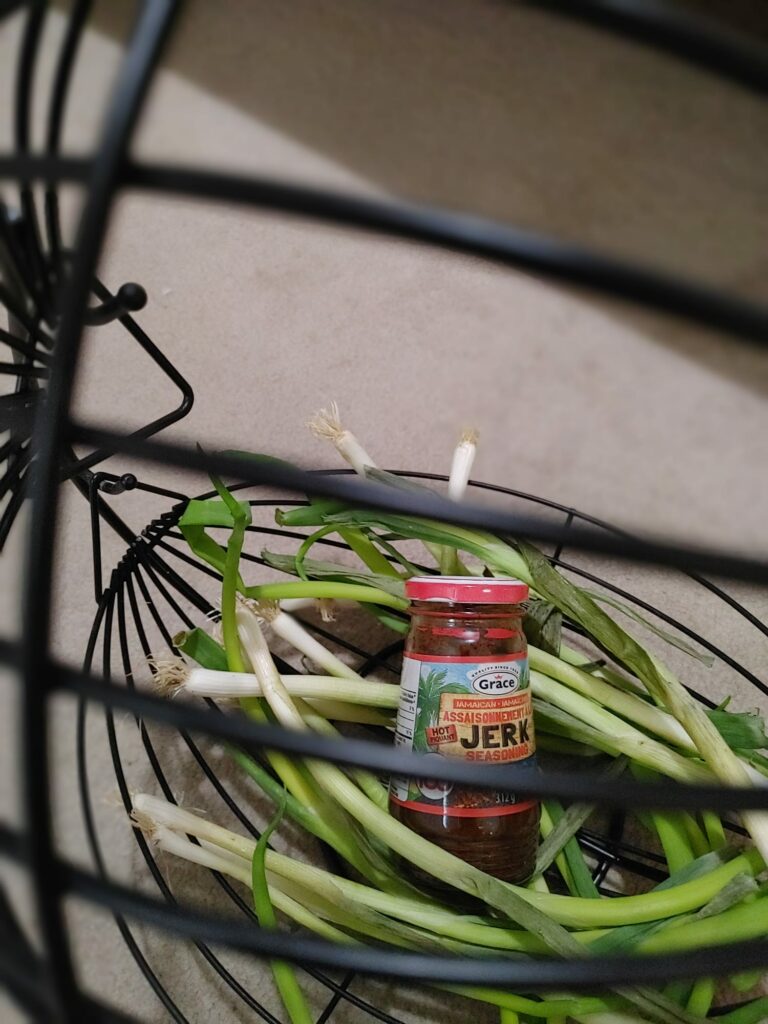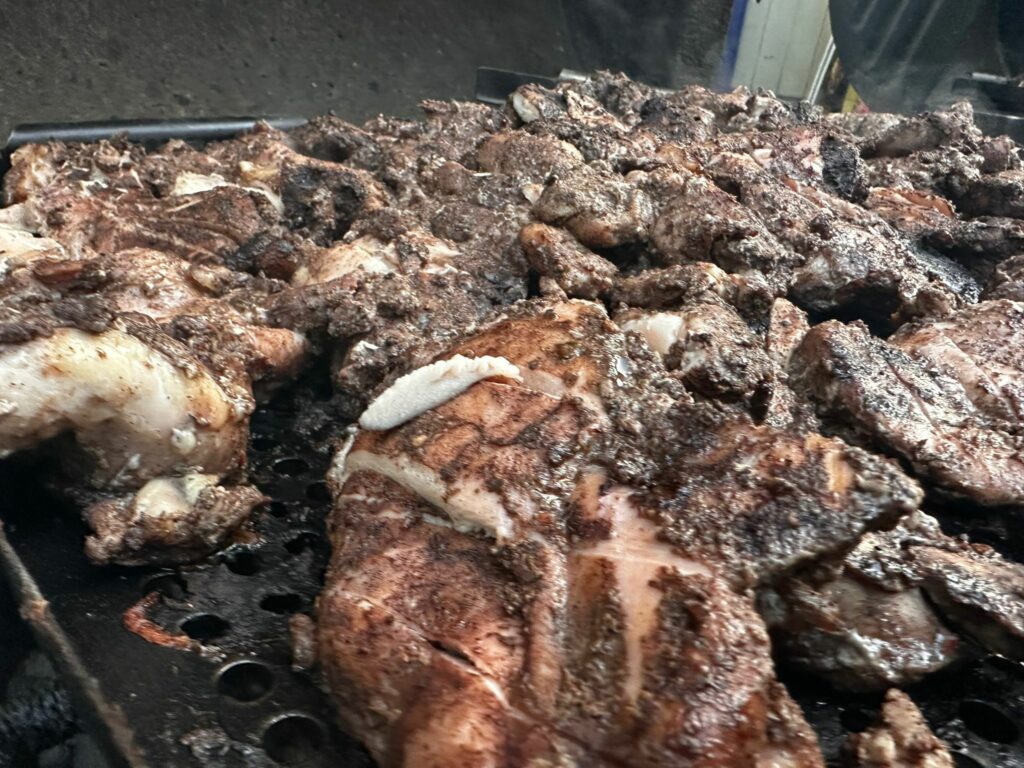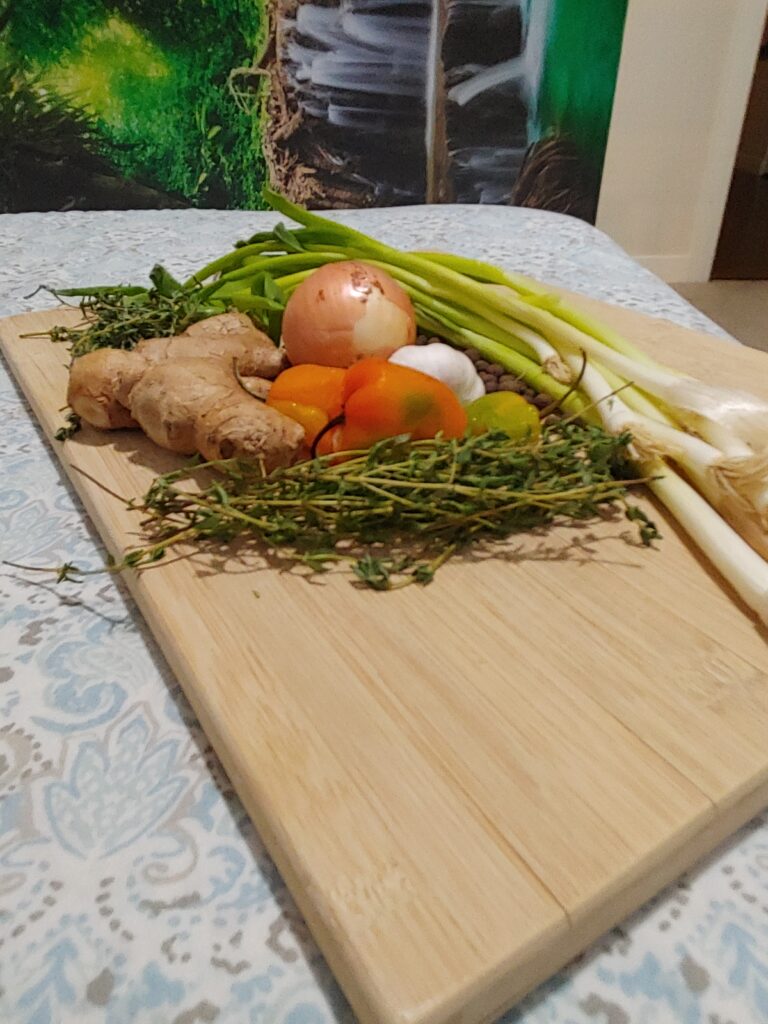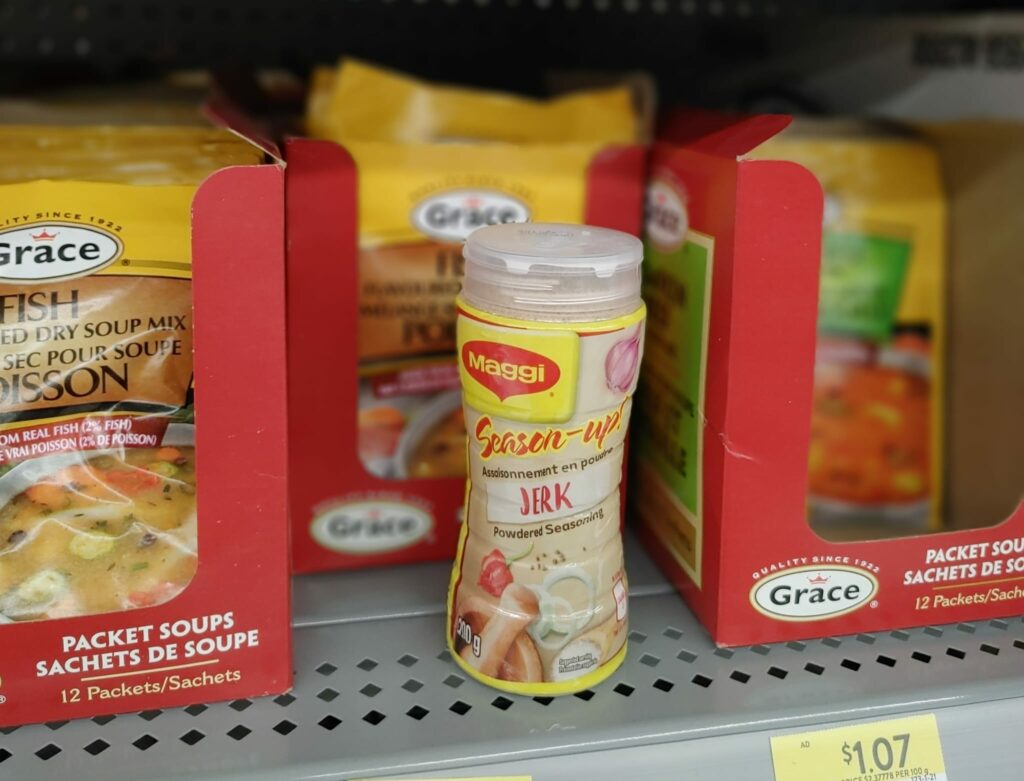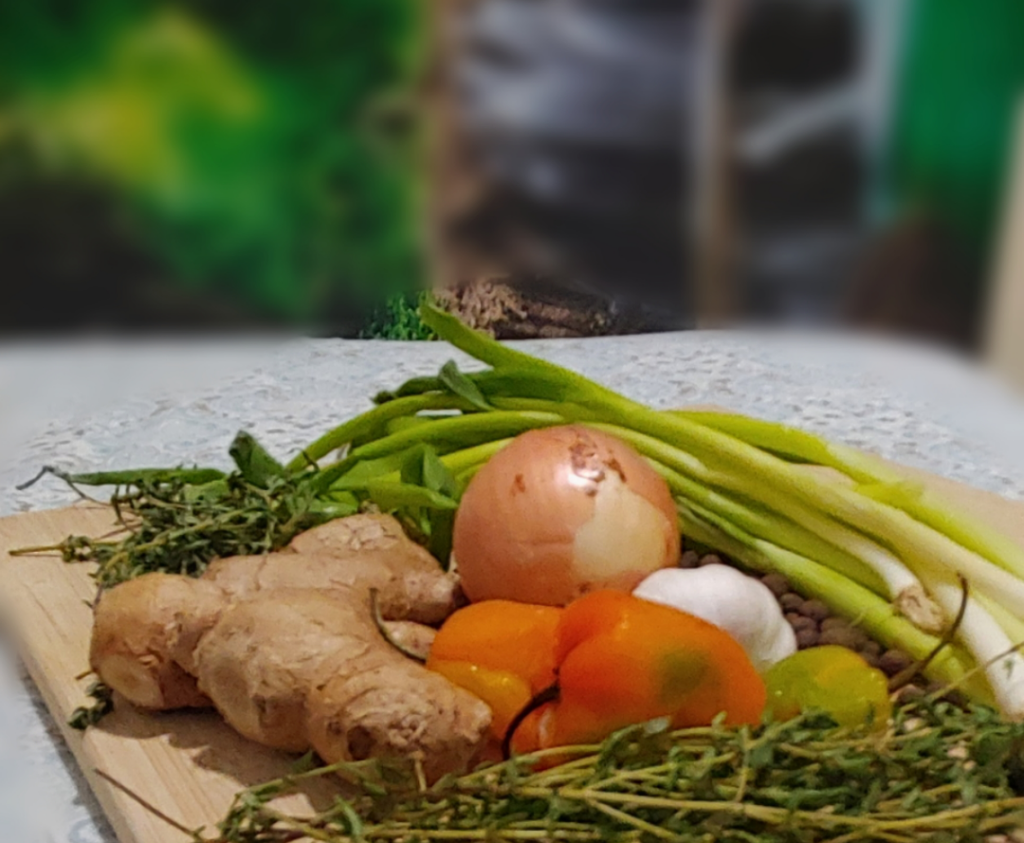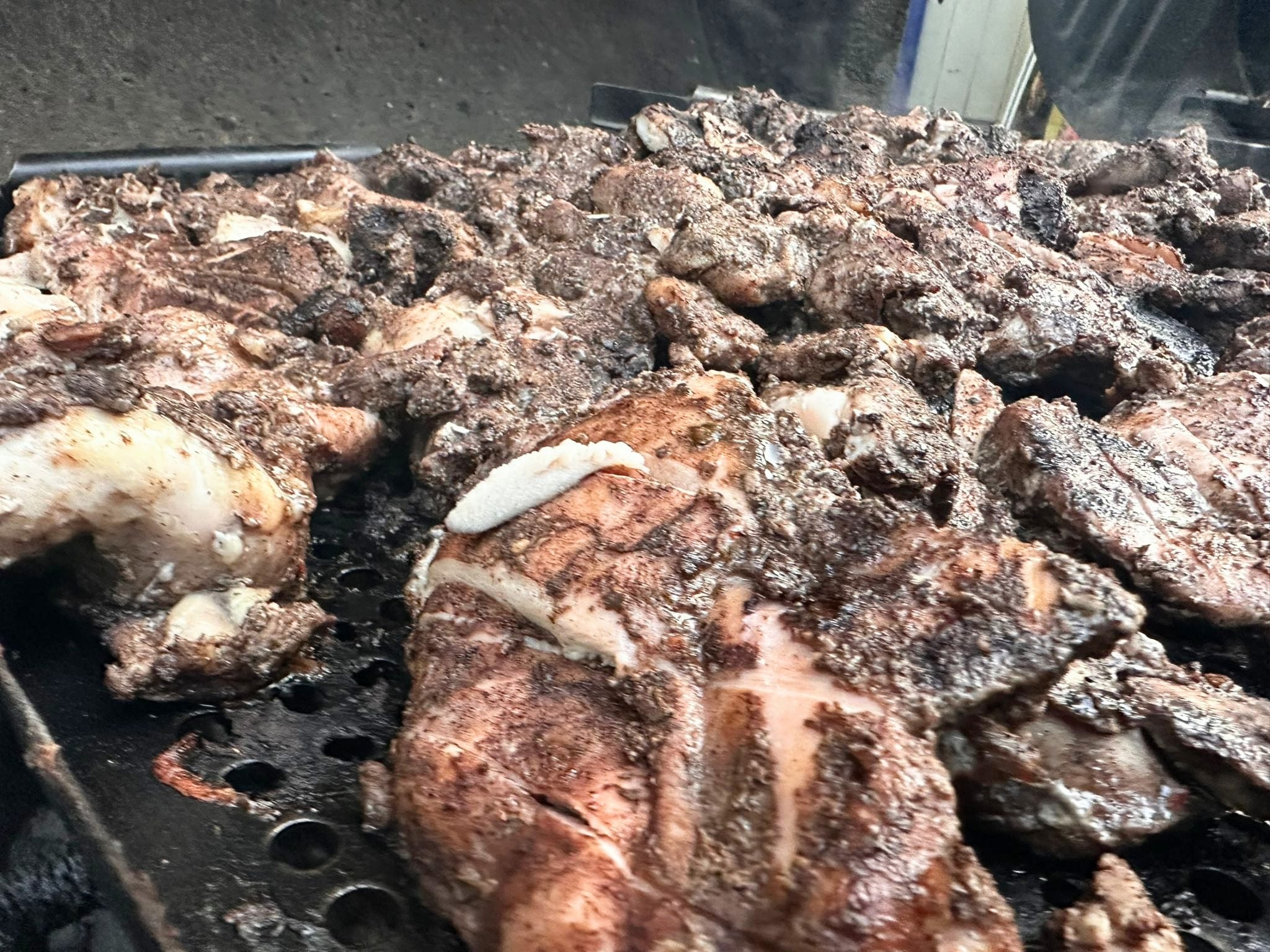NEW AUDIO 9-28-23 CH.mp3
DATE: September 29, 2023
DURATION: 5m 6s
2 SPEAKERS
Speaker 1: Chantelle Haughton (“CH”)
Speaker 2: Marcia Hutchinson (“MH”)
| [0:00] | |
| Music | Feeling the music” by FAMILIA REGGAE is licensed under CC BY-SA 3.0. |
| CH | Jerk is one of Jamaica’s enduring culinary legacies. The rich flavor and spiciness of jerk has endured many generations and still stands as a beloved and popular Jamaican dish today. Marcia Hutchinson, holder of several culinary certifications and one who has worked at popular Jamaican restaurants and jerk huts, will walk us through a quick, simple way to make jerk seasoning at home. All right. So tell us about the ingredients that you put in your jerk seasoning. |
| MH | So, on a regular day, I’ll normally use like a large onion, some pimento seed or allspice, as some people call it, Scotch bonnet, pepper, browning, garlic vinegar, a bit of oil, and salt. |
| CH | Okay |
| MH | In general. |
| CH | All right. All right. Sounds good. So, um, yeah, let’s put this ingredient together. |
| MH | So, we’re going to use some thyme, so everything has to be blend together. |
| CH | Does it matter how in, like, what sequence you put it in? |
| MH | No. If you want to put in the time first, you put in the thyme first you want to put the onion first. Whichever ingredient you prefer to put in, you just put it in. |
| CH | Okay. |
| MH | And call it a day. |
| CH | All right. |
| MH | So, make sure everything that you have is washed, you know, and depends on the size of your blender. You might have to cut up the time a bit. |
| CH | Okay, So chop thyme. |
| MH | Yeah. Chop up your thymes and your onion. Of course, wash. And then you’re going to chop them up. You don’t have to do them super fine because it’s going to go in the blender. |
| CH | Okay |
| MH | So, you just want to chop them up a bit so that they can hold on that they’re easily homogenized, so they come together mixed. Well, you don’t want to have a big chunk of onion and then some small garlic or something like that. |
| CH | Sounds good. |
| MH | So, we’re putting everybody together. |
| CH | So, as you put it in, can you just tell us what you’ve put it in? So you put in about three sprigs of garlic, you put in a large onion. What else are you putting? |
| MH | And then put in some green onion or scallion? I call it scallion, but I believe you guys call it green onion. I put about four of those in. |
| CH | Okay. |
| MH | And then I put some pimento and pimento is very important. The allspice, it gives it that rich flavor that you want. So, you put in about, um, about eight pimento seeds. |
| CH | Okay. Oh, is that how much in teaspoon that would that be? |
| MH | About one teaspoon. |
| CH | Okay. |
| MH | About one teaspoon I would say because for me, although I have this recipe going, it is based on the heart because you cook from the heart as a Caribbean person, you cook based on taste. But in general, the ingredients that I gave you is what we normally you can use as a foundation I would say |
| CH | You put in like vinegar in it. Does it matter what kind of vinegar you put in it? |
| MH | Um, no, not really. I haven’t seen a difference in the flavor of the spice of the seeds, jerk seasoning if you put a what’s that vinegar again? Apple cider vinegar or the white vinegar. But I personally like the apple cider vinegar because to me, I don’t know if. Because it’s from my heart. It tastes different for me |
| CH | it brings out a more flavor. Okay. |
| MH | So, after you get all your seasoning in, okay, you just put everything on the blender. Today, I’m using a bullet because it’s easier and I’m using a small amount. And if it’s not, you can smell it. |
| CH | Oh, that smells really good. All the flavors.. |
| MH | Smell all there |
| CH | A little bit more oil for liquid if It’s too thick |
| MH | Yeah, it was a bit too thick. Just a little bit. |
| CH | Oh, look at that. |
| MH | Perfect. Such a smooth mix. Smell all of that. |
| CH | Oh, it smells amazing. You’re smelling the pepper, the onion, the green onions. |
| MH | And I put a bit of extra pepper in there, so you kind of make your eye water a bit, so. |
| CH | Oh yeah I can feel that |
| MH | Depends on how you like you’re seasoning. |
| CH | Okay. |
| MH | Bit mild. Moderate or. Well, hot. |
| CH | Marcia even gave us some quick tips and tricks on how to alter our jerk sauce to meet our desired tastes. |
| MH | And you have those people that don’t like it super spicy. So in order to reduce the spice, you may put in less of the scotch bonnet pepper. Or you might just add a bit of lemon, you know, squeeze the lemon about a teaspoon of lemon or so, or you can add sugar to it, to it to reduce the spiciness. |
| [5:00] | |
| Music: | Feeling the music” by FAMILIA REGGAE is licensed under CC BY-SA 3.0. |
| CH | Okay. Thank you for listening. The ingredients of this jerk recipe is posted below. Feel free to check it out. |


